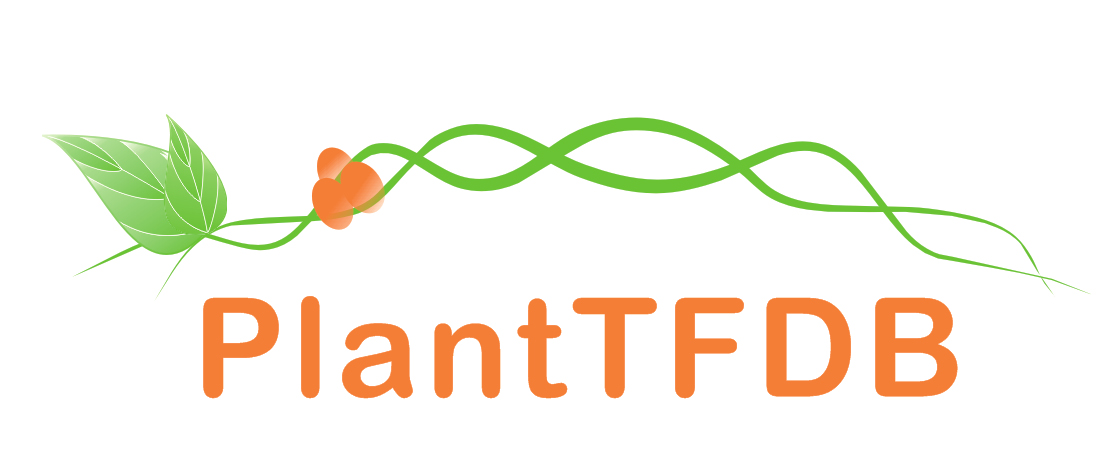| Signature Domain? help Back to Top |
 |
| No. |
Domain |
Score |
E-value |
Start |
End |
HMM Start |
HMM End |
| 1 | AP2 | 26.4 | 1.7e-08 | 141 | 182 | 1 | 55 |
AP2 1 sgykGVrwdkkrgrWvAeIrdpsengkr.krfslgkfgtaeeAakaaiaarkkleg 55
s+y+GV++++++grW+++I+d + k+++ Aa+a+++a+ k++g
Cucsa.367290.2 141 SQYRGVTFYRRTGRWESHIWD------CgKQVY--------LAARAYDRAAIKFRG 182
78*******************......559976........788899998888887 PP
|
| 2 | AP2 | 40.8 | 5.7e-13 | 225 | 275 | 1 | 55 |
AP2 1 sgykGVrwdkkrgrWvAeIrdpsengkrkrfslgkfgtaeeAakaaiaarkkleg 55
s+++GV+ +k grW+A+ + +k+++lg f+++ eAa+a+++a+ k +g
Cucsa.367290.2 225 SKFRGVTLHK-CGRWEARMGQF--L-GKKYVYLGLFDSEIEAARAYDKAAIKCNG 275
79********.7******5553..2.26**********99**********99776 PP
|
| Publications
? help Back to Top |
- Duarte JM, et al.
Expression pattern shifts following duplication indicative of subfunctionalization and neofunctionalization in regulatory genes of Arabidopsis.
Mol. Biol. Evol., 2006. 23(2): p. 469-78
[PMID:16280546] - Ren Y, et al.
An integrated genetic and cytogenetic map of the cucumber genome.
PLoS ONE, 2009. 4(6): p. e5795
[PMID:19495411] - Guo S, et al.
Transcriptome sequencing and comparative analysis of cucumber flowers with different sex types.
BMC Genomics, 2010. 11: p. 384
[PMID:20565788] - Li Z, et al.
RNA-Seq improves annotation of protein-coding genes in the cucumber genome.
BMC Genomics, 2011. 12: p. 540
[PMID:22047402] - Thamilarasan SK,Park JI,Jung HJ,Nou IS
Genome-wide analysis of the distribution of AP2/ERF transcription factors reveals duplication and CBFs genes elucidate their potential function in Brassica oleracea.
BMC Genomics, 2014. 15: p. 422
[PMID:24888752] - Zhang GB,Yi HY,Gong JM
The Arabidopsis ethylene/jasmonic acid-NRT signaling module coordinates nitrate reallocation and the trade-off between growth and environmental adaptation.
Plant Cell, 2014. 26(10): p. 3984-98
[PMID:25326291] - Ranocha P,Francoz E,Burlat V,Dunand C
Expression of PRX36, PMEI6 and SBT1.7 is controlled by complex transcription factor regulatory networks for proper seed coat mucilage extrusion.
Plant Signal Behav, 2014. 9(11): p. e977734
[PMID:25531128] - Djemal R,Khoudi H
Isolation and molecular characterization of a novel WIN1/SHN1 ethylene-responsive transcription factor TdSHN1 from durum wheat (Triticum turgidum. L. subsp. durum).
Protoplasma, 2015. 252(6): p. 1461-73
[PMID:25687296] - Kazan K
Diverse roles of jasmonates and ethylene in abiotic stress tolerance.
Trends Plant Sci., 2015. 20(4): p. 219-29
[PMID:25731753] - Prunet N, et al.
SQUINT promotes stem cell homeostasis and floral meristem termination in Arabidopsis through APETALA2 and CLAVATA signalling.
J. Exp. Bot., 2015. 66(21): p. 6905-16
[PMID:26269626] - Xie W, et al.
Exploring potential new floral organ morphogenesis genes of Arabidopsis thaliana using systems biology approach.
Front Plant Sci, 2015. 6: p. 829
[PMID:26528302] - Zumajo-Cardona C,Pabón-Mora N
Evolution of the APETALA2 Gene Lineage in Seed Plants.
Mol. Biol. Evol., 2016. 33(7): p. 1818-32
[PMID:27030733] - Zhao Y, et al.
An alternative strategy for targeted gene replacement in plants using a dual-sgRNA/Cas9 design.
Sci Rep, 2016. 6: p. 23890
[PMID:27033976] - Gao R,Liu P,Irwanto N,Loh R,Wong SM
Upregulation of LINC-AP2 is negatively correlated with AP2 gene expression with Turnip crinkle virus infection in Arabidopsis thaliana.
Plant Cell Rep., 2016. 35(11): p. 2257-2267
[PMID:27473526] - Huang Z, et al.
APETALA2 antagonizes the transcriptional activity of AGAMOUS in regulating floral stem cells in Arabidopsis thaliana.
New Phytol., 2017. 215(3): p. 1197-1209
[PMID:27604611] - Dory M, et al.
Kinase-Associated Phosphoisoform Assay: a novel candidate-based method to detect specific kinase-substrate phosphorylation interactions in vivo.
BMC Plant Biol., 2016. 16(1): p. 204
[PMID:27655033] - Wang P, et al.
Expansion and Functional Divergence of AP2 Group Genes in Spermatophytes Determined by Molecular Evolution and Arabidopsis Mutant Analysis.
Front Plant Sci, 2016. 7: p. 1383
[PMID:27703459] - Sharma P, et al.
Promoter Trapping and Deletion Analysis Show Arabidopsis thaliana APETALA2 Gene Promoter Is Bidirectional and Functions as a Pollen- and Ovule-Specific Promoter in the Reverse Orientation.
Appl. Biochem. Biotechnol., 2017. 182(4): p. 1591-1604
[PMID:28130768] - Kihira M, et al.
Arabidopsis thaliana FLO2 is Involved in Efficiency of Photoassimilate Translocation, Which is Associated with Leaf Growth and Aging, Yield of Seeds and Seed Quality.
Plant Cell Physiol., 2017. 58(3): p. 440-450
[PMID:28158741] - Balanzà V, et al.
Genetic control of meristem arrest and life span in Arabidopsis by a FRUITFULL-APETALA2 pathway.
Nat Commun, 2018. 9(1): p. 565
[PMID:29422669] - Dotto M,Gómez MS,Soto MS,Casati P
UV-B radiation delays flowering time through changes in the PRC2 complex activity and miR156 levels in Arabidopsis thaliana.
Plant Cell Environ., 2018. 41(6): p. 1394-1406
[PMID:29447428] - Song C,Lee J,Kim T,Hong JC,Lim CO
VOZ1, a transcriptional repressor of DREB2C, mediates heat stress responses in Arabidopsis.
Planta, 2018. 247(6): p. 1439-1448
[PMID:29536220]
|




